For those pursuing a self-sufficient lifestyle, selecting the best dual-purpose chickens is a key step toward achieving the goal. Here on our homestead, we value breeds that reliably provide meat and eggs because they provide the foundation for a sustainable flock. We’ll explore our top picks for dual-purpose chickens, detailing their indispensable qualities. Join us as we uncover what makes these chickens exceptional, helping you enrich your homestead with reliable and productive birds.

This post was originally published in January of 2015. I’ve updated it today to share new pictures and offer new insights we’ve gained about these breeds over the years.
Benefits of Raising The Best Dual-Purpose Chickens
Your local weather plays a significant role in picking the right chicken breeds. For example, Sussex chickens can do well in the cold, while Leghorns don’t do well in the cold but are better for hotter spots. Picking the right breed helps ensure your chickens do more than get by—they thrive. In TFL’s Guide to Successful Chicken Keeping, we examine many chicken breeds so you can make the best choice for your goals.
- The dual purpose chicken breed provides meat and eggs efficiently.
- The best dual purpose chickens are hardy heritage breeds with better health and dispositions.
- These breeds are more productive and have longer lifespans.
- These dual-purpose breed birds can be free-ranged with little to no commercial feed.
- The meat-to-feed ratio and the feed-to-egg ratio are economical.
- Dual purpose chickens get broody and can hatch out and raise at least 12 eggs twice a year. We had a Black Australorp hen hatch out and raise 24 eggs!
- The ability to reproduce naturally reduces costs and provides robust young chickens for future needs.
- You can have more than one commodity to barter with if needed.
During a conversation about our choice of breeds and feeding techniques, someone in the audience questioned the relevance of traditional methods, saying, “I am tired of hearing people talk about the ‘old timers’ and how they did things. We don’t have the same birds or feed they did.” I have to admit, this comment caught me off guard. In my best southern accent, I replied, “Well, bless your heart.” Being from the South, he understood exactly what I meant!
The truth is, when we choose heritage or rare breeds, we continue preserving the same breeds that many of our ancestors had. I have two breeds that my grandmother had, and yes, I do feed them the way she did. I doubt chickens change with the times, if you know what I mean.
She did not have GMOs or organic vs. non-organic feed to be concerned about like I do. What feed I buy is non-GMO, organic cracked corn, and they get most of their food from free-ranging and garden waste, just as hers did. These chicken breeds don’t just connect us to our past; they help pave a sustainable path forward. You can read more about how to feed chickens in our companion article.
With this in mind, we offer you our personal choices of the best dual-purpose chickens. I hope I’m not leaving out your favorite breeds!
Watch the Video For This Post
Best Dual Purpose Chickens
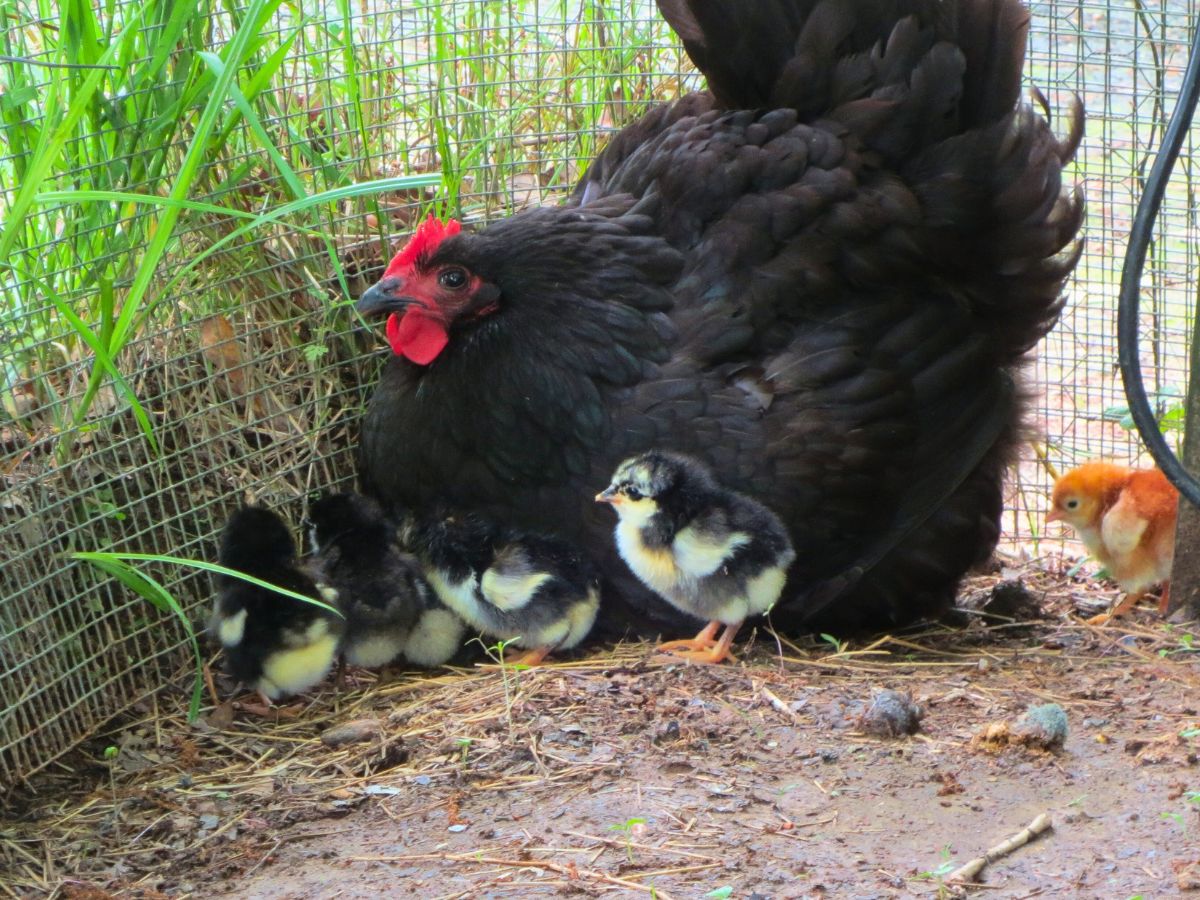
1) Black Australorp
This breed is classified as one of the true heritage chicken breeds. With its beautiful black iridescent feathers, this bird ties with my favorite, the Speckled Sussex, and is a great addition to any flock of dual-purpose chickens, even in cold climates. My husband prefers the Black Australorp breed to any other.
I love this friendly bird, as did my grandmother, who had them as a girl in the early 1900s. The hens set a record for egg laying—364 eggs out of 365 days (lots of eggs)! They did it without help from heating and lighting.
This great breed has one of the best setters and mothers I have ever had. The rooster is very watchful and protective of the flock, adding to its free-range prowess. When talking about chicken breeds, Black Australorps are often seen as meat chickens since they are large birds, but they are so much more!
This is one of the larger birds in the dual purpose category. They will dress out between 5-8 pounds, depending on whether it’s a cockerel or hen. They are one of the best free-ranging breeds I have seen, good foragers, and very alert to predators.
They start laying large brown eggs at around 5 months of age. They lay 300-360 large light brown eggs a year. We find them to be the best winter layers we have, and egg abnormalities are rare with them, even when young. Their ALBC (American Livestock Breeds Conservancy) status is “recovering.”
You can read all about the Black Australorp chicken breed in our companion article.
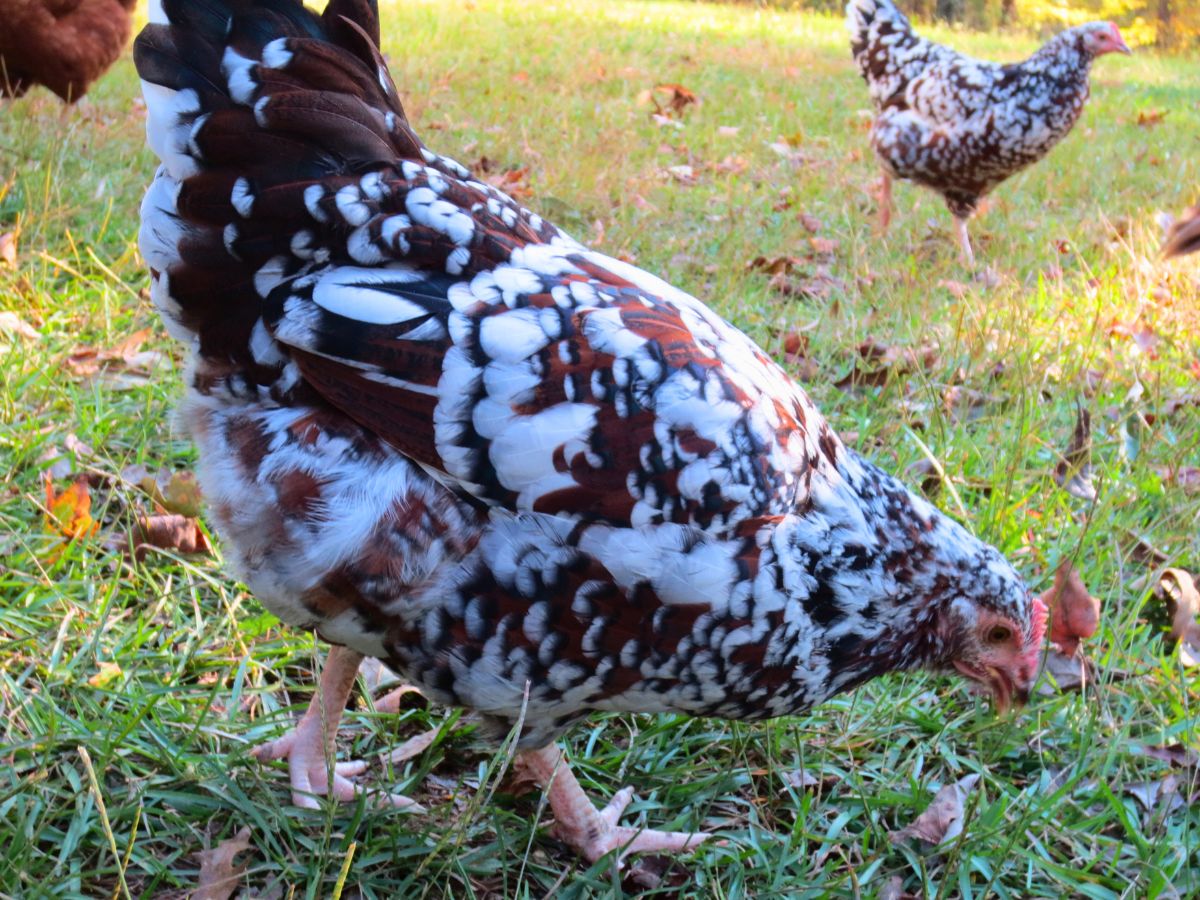
2) Speckled Sussex
The Sussex chicken holds a special place in my heart, alongside the Black Australorp, as one of my favorites. These birds aren’t just beautiful and friendly; watching them shepherd their chicks around the yard is genuinely one of the most entertaining sights on the farm.
The roosters of this breed are not only colorful and heavy but also exceptionally protective and vigilant, making them excellent guardians for the flock. The hens start laying large, light brown to beige eggs at about 5 months of age and are remarkable for their resilience during the colder months. They lay an average of 275-325 eggs a year.
I’ve never had a Sussex hen become egg-bound, a testament to their robust health. I’m not saying it can’t happen, I’m just saying I’ve never experienced it in raising these hearty birds. You can read about how to help an egg bound hen and about egg laying and abnormalities in our companion articles.
Sussex chickens are substantial in size, with adults weighing between 7 and 9 pounds dressed, depending on whether they’re cockerels or hens. They are vigorous and active foragers, always on the move and adept at finding food, which makes them a perfect fit for any homestead looking to maximize self-sufficiency.
Their status with the American Livestock Breeds Conservancy (ALBC) is currently ‘recovering,’ which underscores the importance of choosing such heritage breeds to help maintain biodiversity and preserve the legacy of these wonderful animals. Our companion article explains all about the Speckled Sussex breed.
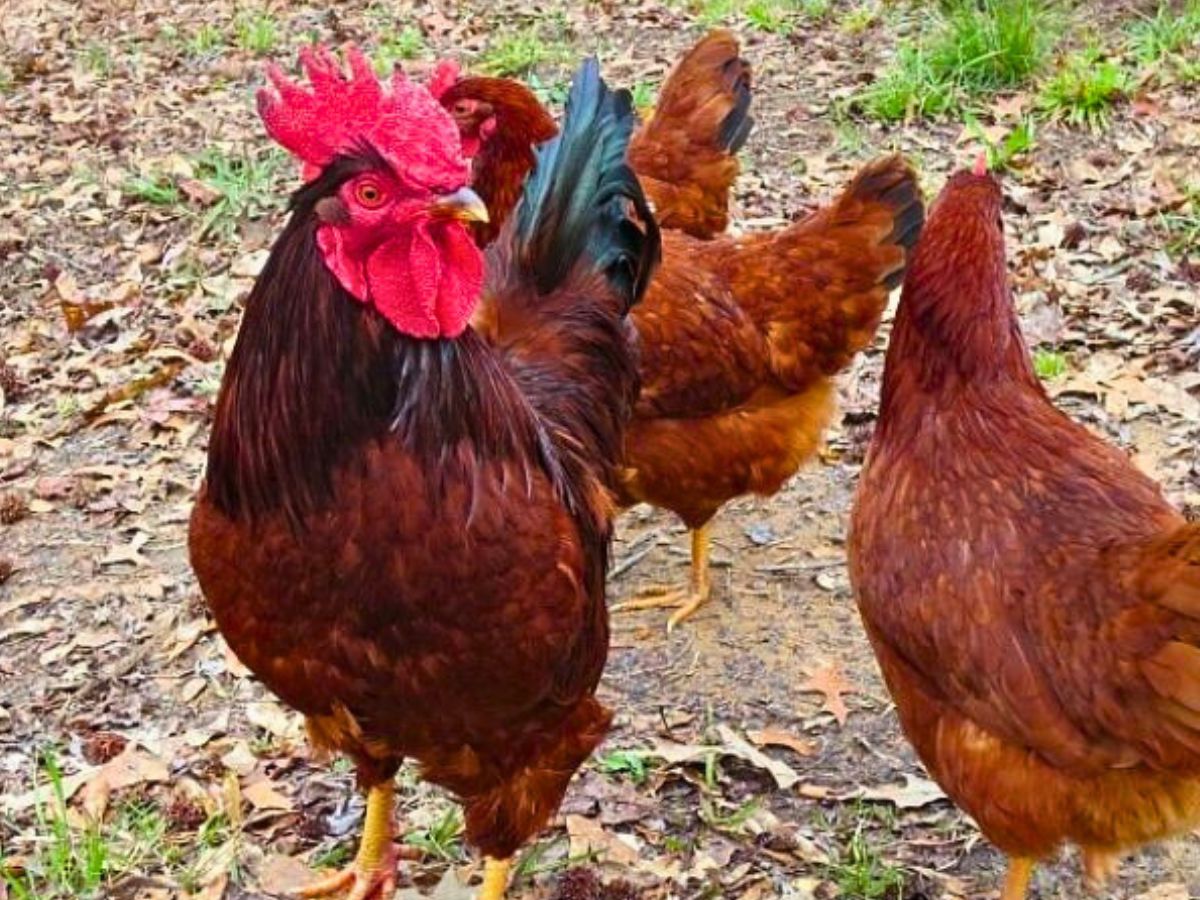
3) Rhode Island Reds
Rhode Island Reds hold a cherished place in our flock, continuing a legacy that my grandmother and my husband’s grandmother began. These chickens are not just excellent egg layers; they’re truly outstanding. They start laying a bit earlier than others—often a week or two sooner—but it’s their consistent performance throughout the year that impresses most. Even in the chill of winter, they reliably produce 250 to 300 large, brown eggs a year.
Originating in Rhode Island, this breed isn’t as rare as others but holds its own because of its robust nature and adaptability. Rhode Island Reds are known for their friendly demeanor and exceptional foraging abilities, which make them particularly valuable on any homestead. Big Red, our RIR Roo, is friendly and full of personality.
As for their utility as meat birds, they typically dress out between 6-8 pounds, depending on whether it’s a cockerel or hen. It’s easy to see why Rhode Island Red chickens have remained a favorite dual-purpose breed for generations, revered in backyards and on farms across the country.
Check Out Our Poultry Guides For Happy, Healthy Flocks
Honorable Mentions
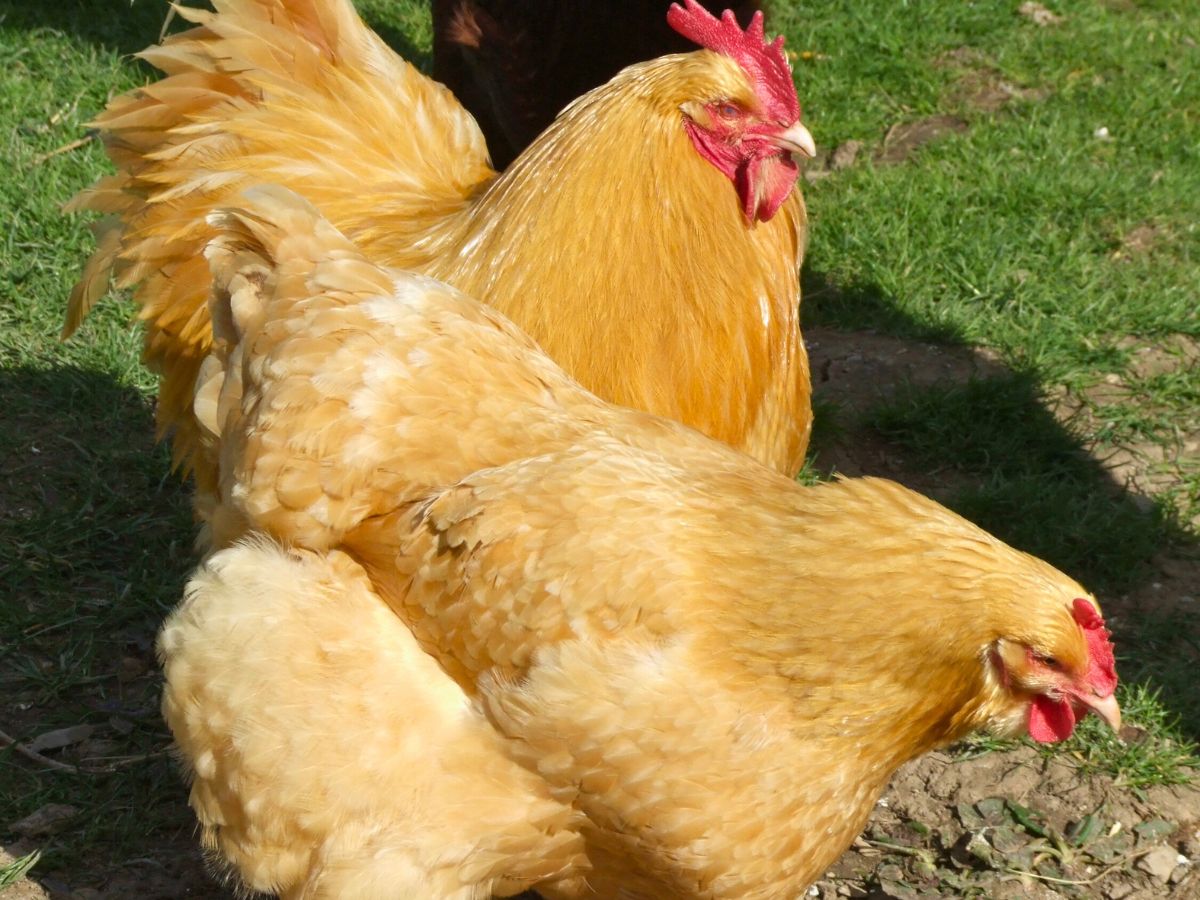
1) Buff Orpingtons
No other dual purpose breed epitomizes the classic British chicken quite like the Buff Orpington. Renowned for their striking appearance and unrivaled docility, Orpingtons are often favored as family pets, particularly due to their gentle nature which makes them excellent companions for small children. Their calm disposition makes them ideal candidates for 4-H projects and local fairs. Our 7-year-old granddaughter loves her Buff Orpington hens.
Orpingtons excel in confined settings and are less adept at free-ranging. They can be free ranged, but their foraging skills are somewhat limited, and they tend not to fare well in wet conditions, preferring drier climates.
As egg layers, the hens are quite productive, laying about 250 light brown to pale pinkish eggs annually. This places them just below our top choices for the best dual purpose chickens. However, where they truly shine is in meat production. Buff Orpingtons mature into substantial birds, dressing out between 8 to 10 pounds, and they reach table size by about 20 weeks. Their ability to provide high-quality meat makes them a valuable addition to any homestead and certainly worth an honorable mention.
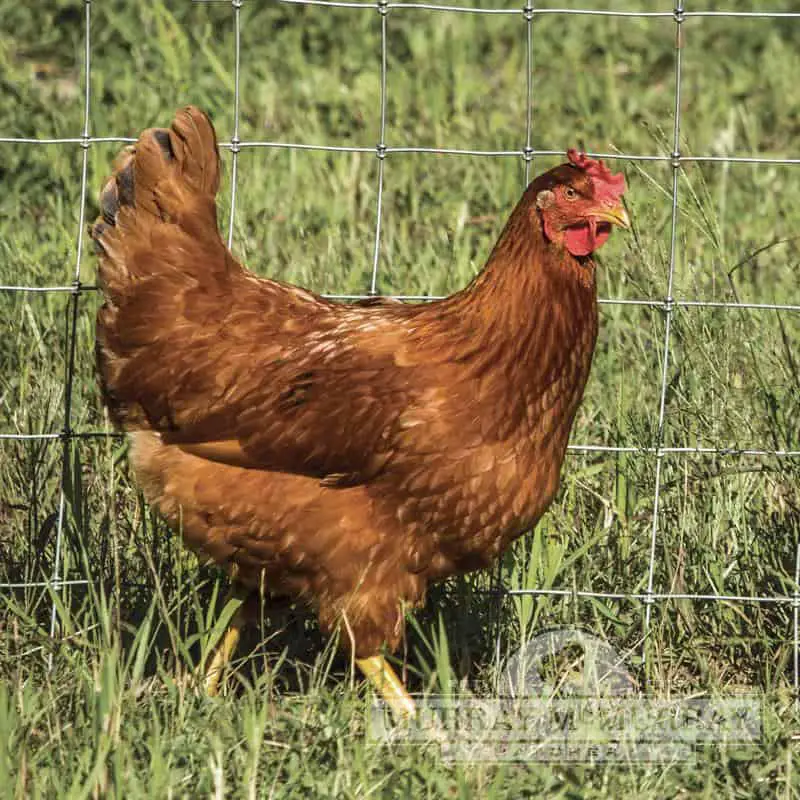
2) New Hampshire Reds
The New Hampshire Red is a distinctive breed, developed from the Rhode Island Red to emphasize more rapid growth and more excellent meat production. While it shares some heritage with the Rhode Island Red, it stands out due to its ability to produce a significant amount of meat and its faster development. These chickens feather out quickly and are ready for the table by about 16 weeks, making them an excellent choice for those looking to efficiently raise chickens for meat.
However, this efficiency in meat production does come with a trade-off in egg-laying capabilities. The New Hampshire Red lays approximately 175 eggs per year, which is fewer than other dual-purpose chicken breeds, including the Rhode Island Red. Despite this, their robustness and quick maturation make them a valuable breed for homesteaders who prioritize meat production.
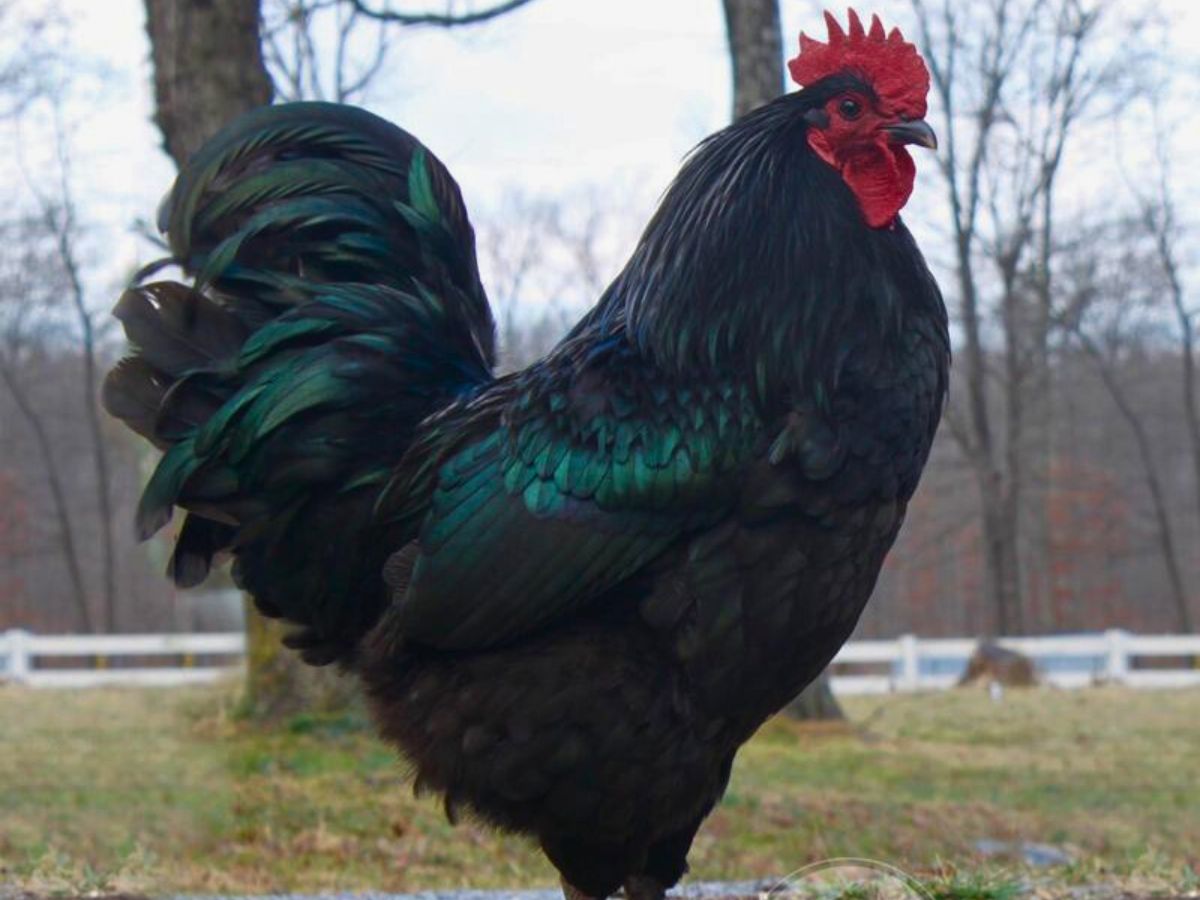
3) Jersey Giant
The Jersey Giant, the largest known chicken breed, originated in New Jersey in the late 19th century. Developed by crossing large, dark Asiatic breeds such as Black Java, Dark Brahma, Dark Cornish, and Black Langshan, this breed was designed to provide a substantial amount of meat. While they are slightly larger than their white counterparts, they are most commonly recognized for their impressive size and stature, often described as the giants of the chicken world.
Despite their size, Jersey Giants do not have an efficient feed-to-meat ratio compared to smaller, faster-maturing breeds like the Cornish Cross. They require more feed and time to reach maturity, which may not suit every homestead’s needs. However, with proper management, including ample free-ranging and tailored feeding strategies, they can be a viable option for those with enough space and patience.
Jersey Giants are also commendable for their egg-laying abilities, producing around 200 extra-large brown eggs annually. This dual-purpose capability allows them to serve well on small farms looking for both meat and egg production.
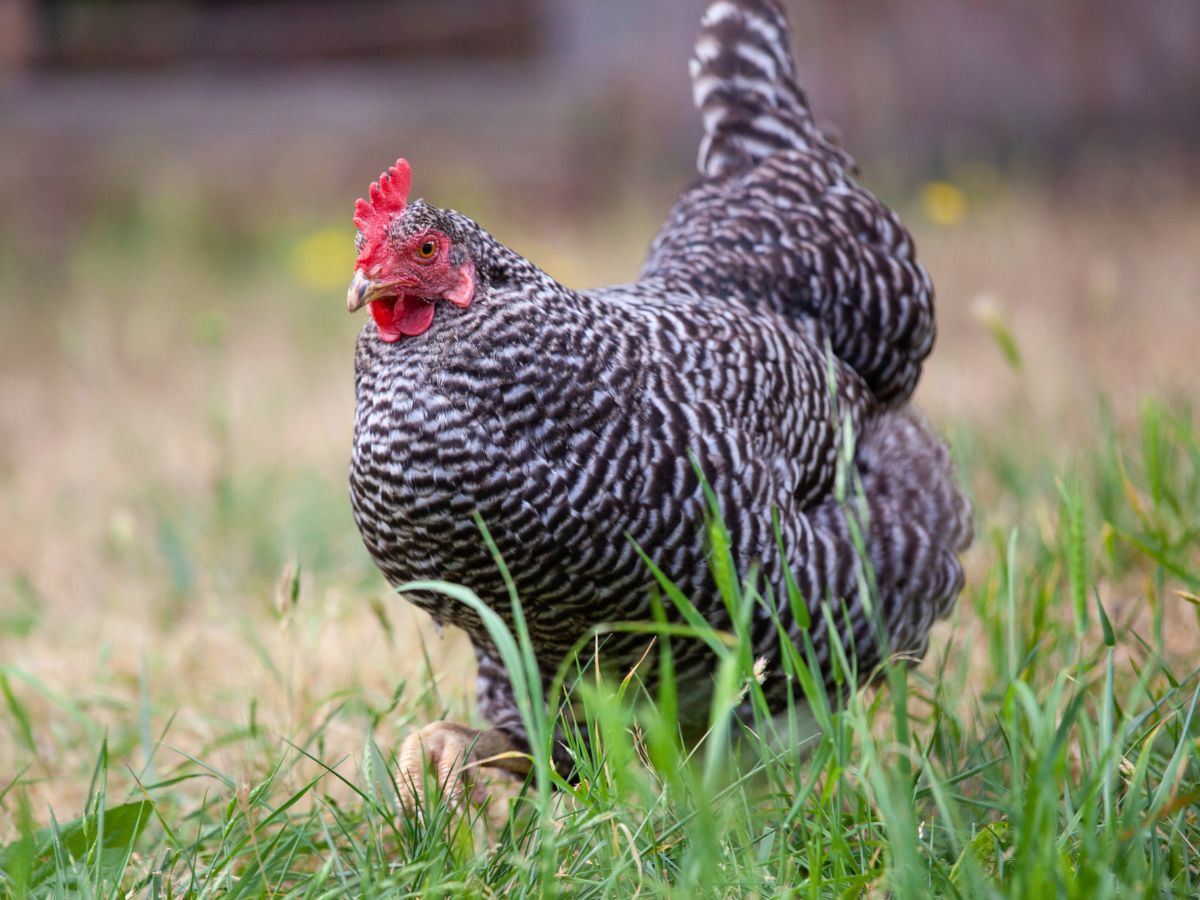
4) Barred Plymouth Rock
The Barred Rock has always held a special place in my heart. Some of my earliest and fondest memories involve collecting the eggs and watching these Plymouth Rock chickens dash around the yard.
This breed was developed in New England in the early 1800s. The Barred Rock is a result of crossing Dominiques and Black Javas. Its adaptability and hardiness have allowed it to spread to nearly every part of the world, making it a staple in many backyards.
Their ability to mature by 20 weeks and prowess as foragers make them particularly valuable. They lay 200-280 medium-large light brown eggs a year and are known for their robustness, making them ideal for anyone looking for a reliable, low-maintenance chicken for the homestead.
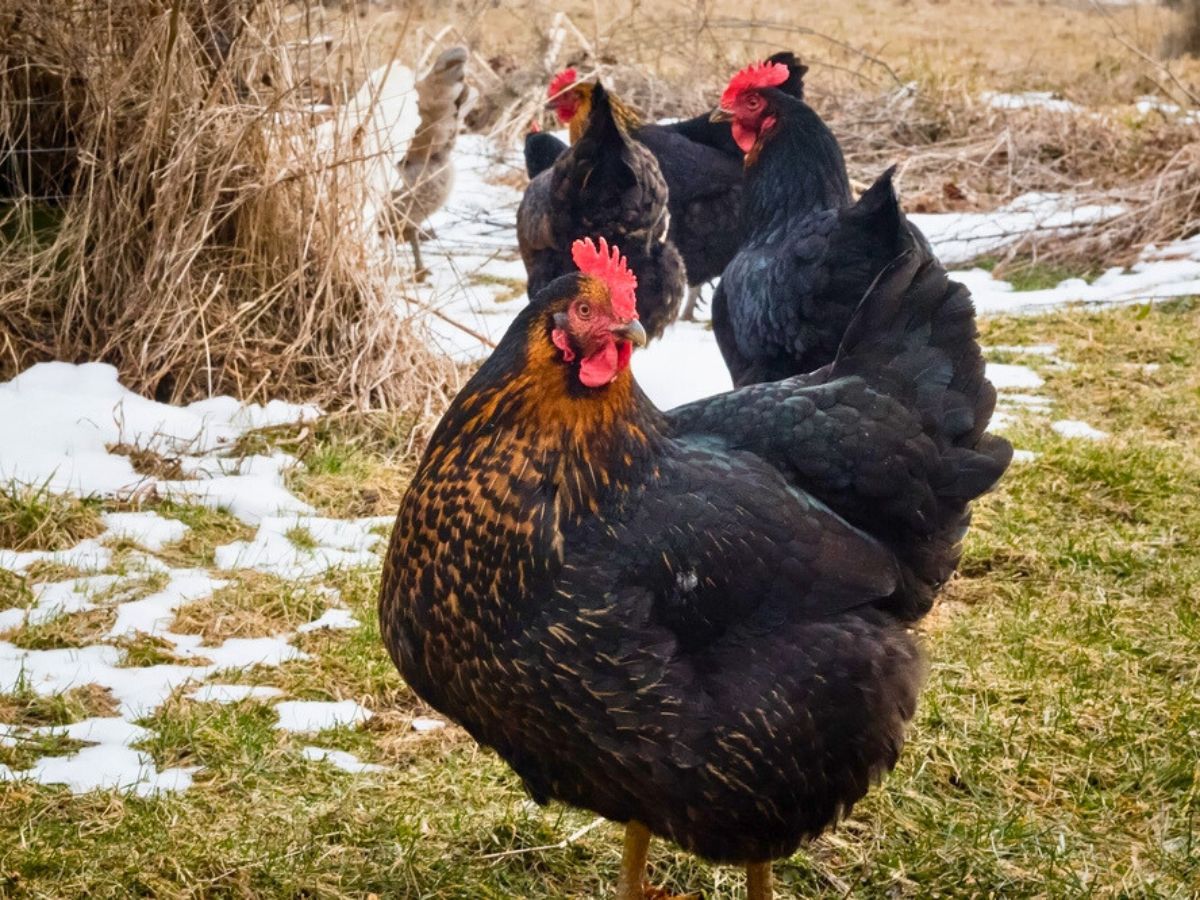
5) Black Star
Black Star chickens are a dynamic crossbreed resulting from mating a Rhode Island Red or New Hampshire rooster with a Barred Rock hen. They share many traits with their cousin, the Red Star, and are known as sex-link chickens. This means male and female chicks can be distinguished by their different colors at hatching, which makes determining their sex simple.
These chickens are not only easy to raise but also boast an efficient feed-to-egg conversion ratio, making them economical for backyard flocks. The hens begin to lay large brown eggs around 22 weeks of age and lay between 250 to 300 large brown eggs per year. At maturity, pullets typically weigh around 6 lbs dressed.
Be sure to check out our detailed companion article for a deeper look into the benefits and care of Black Star chickens.
Wrap Up
While we cannot determine which of these would be the best dual-purpose chickens for your homestead, we hope these recommendations help you choose wisely and confidently.
For a deeper dive into chicken breeds, check out our “Guide to Successful Chicken Keeping,” where we explore the characteristics of over 28 different breeds. This comprehensive guide includes photos, extensive details on each breed, and more than 200 pages of information dedicated to helping you raise a happy, healthy flock.
We’re eager to hear about your experiences: What breeds do you currently raise, and would you choose them again? Which ones are your favorites and why? Share your stories, and let’s continue learning from each other!
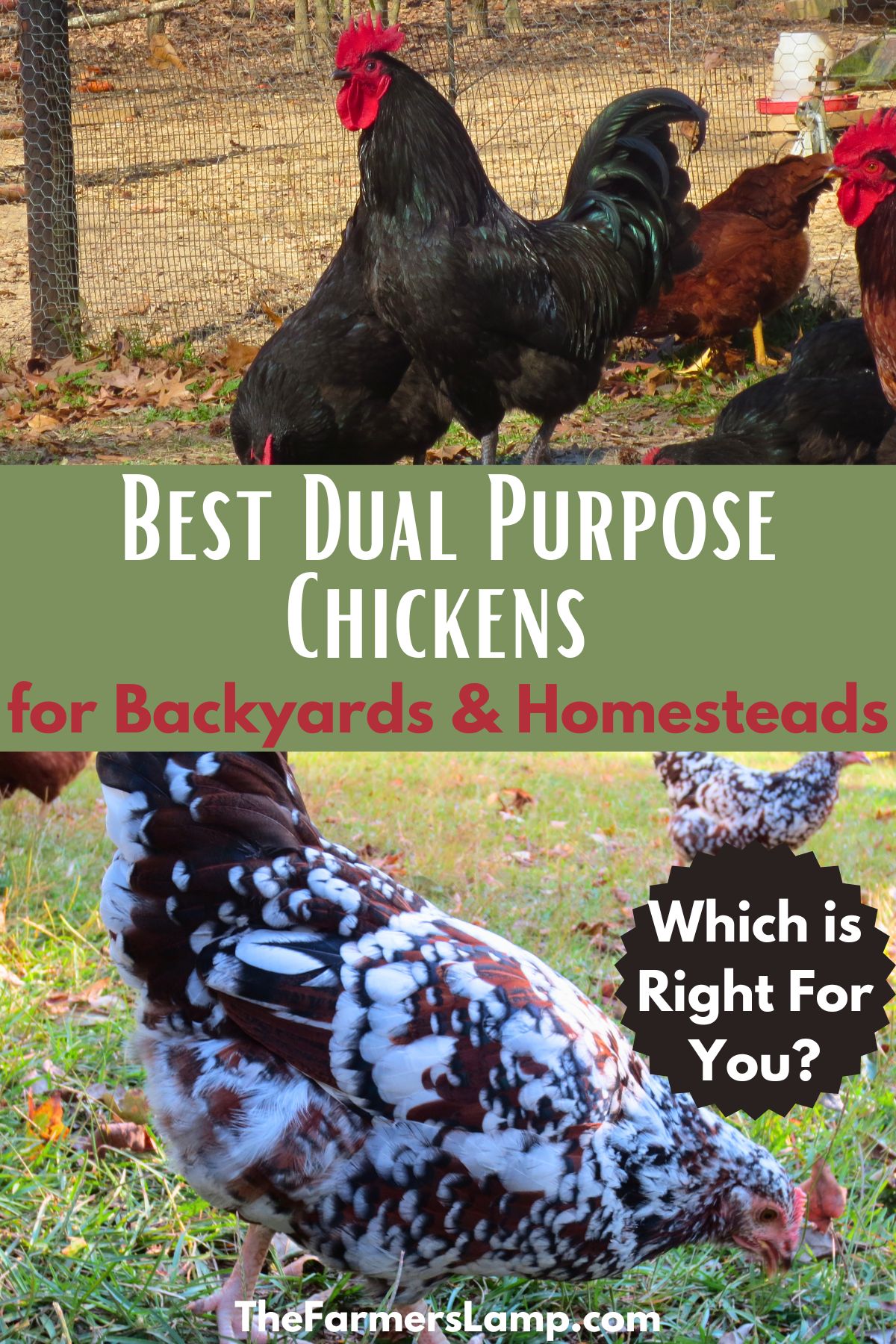
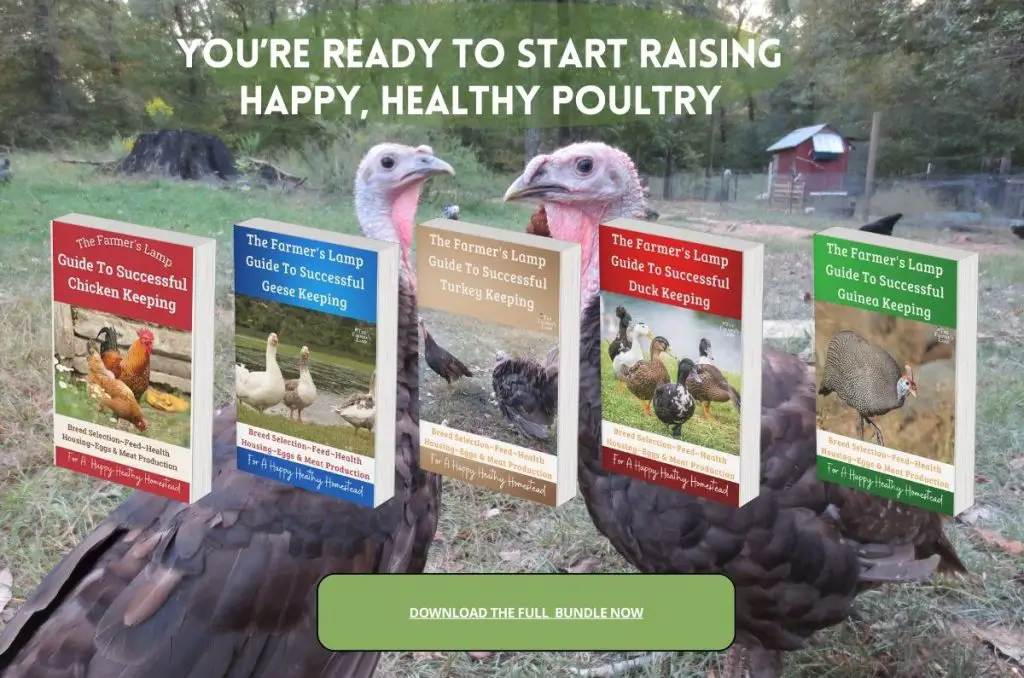
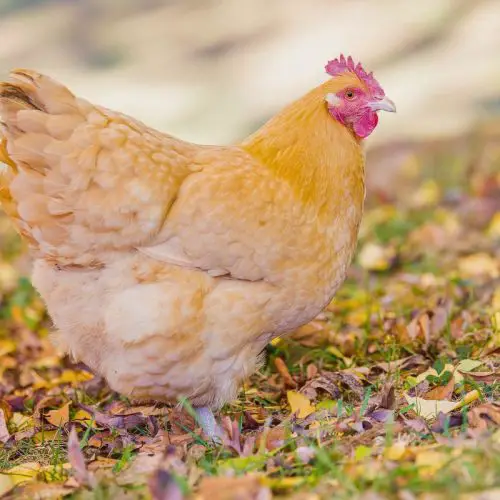
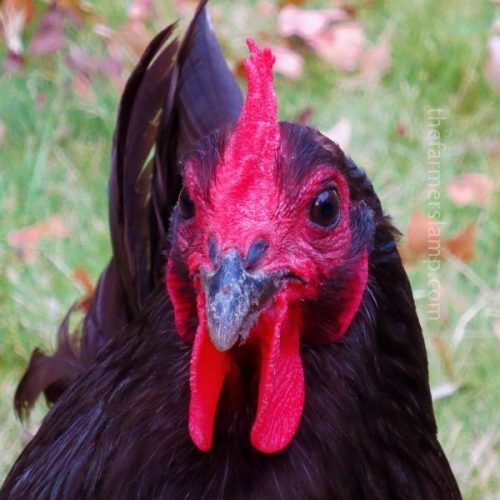
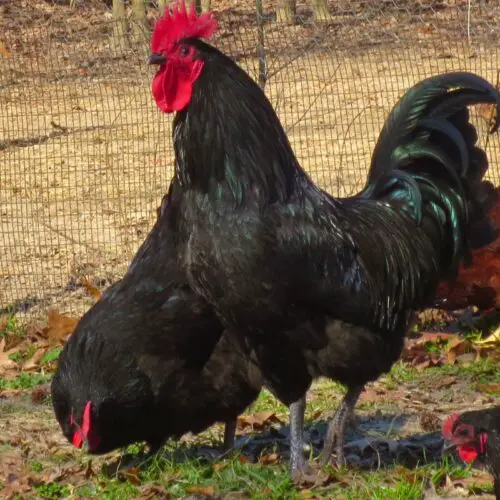
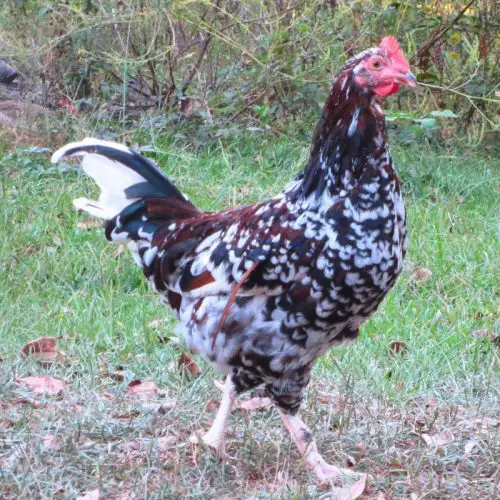
I am new to chicken keeping and am trying to decide on what breeds to keep. If you have multiple different breeds in your flock won’t you wind up with a bunch of mixed breed chickens? If so, is this a problem?
Hello Debra,
You’ll find many articles and new ones all the time to hopefully answer all your chicken keeping questions. I’ll put the link to them at the end of this message.
Now, to your question. Yes, if you let your hens set eggs they will be a mix of the hen and the rooster. If you have hens of the same breed as the rooster, they of course will be pure.
This is not a problem for the flock as a whole. It would only be a problem if you wanted to keep pure blood lines.
For most backyard chicken keepers, this isn’t a big deal. You can read about how we keep pure lines in our flock here Saving Heritage Breed Chickens.
I hope this answers your questions. We are here to help in any way we can so please feel free to email us using the Contact TFL Link on the Welcome Home page.
You have embarked on an incredible, addictive venture with deciding to keep chickens! Enjoy!
Chicken Articles
Thanks. I will definitely check out those articles.
We are in Hardeman County,, southwestern part of TN.. Sevier has some beautiful country!
Well hi, there neighbor! We LOVE it here so far and can’t wait to see more. My father and his wife bout property in Chattanooga but haven’t started building yet. I can’t wait to see what this place looks like in the fall. Let me know if you ever come this way.
I’m experimenting with a lot of different breeds. This chick season I am adding the Black Australorpe and a couple of Ameraucanas for the colorful eggs and some white Leghorns. I dearly love my Buff Orpington hens because they are so people friendly and I find that there are always one or two who will appear with chicks every season to add to my flock. The roosters are super watchful, but vary in people friendliness. Another favorite are the Cuckoo Marans with their rich, dark brown eggs.. They are very good foragers, clean and hardy. The roosters are my favorite; they are such gentlemen, protective, but not aggressive. My favorite was named “Gentleman Jim”. I have also had Speckled Sussex and love that I can tell the hens apart. I had a young SS rooster that was fearless in his confrontations with the older, larger roosters and came to known as “The General”. He was the boss. My latest have been the Dominiques who did very well during a stretch of very cold weather for TN, a week in the single digits at night. They roost in a single cedar tree under the watchful eye of my English shepherds. My flock of 15 is giving me 10-12 eggs a day now and one Buff has snuck off to lay … as of today there are 12 eggs in her nest. These girls range over about 15-20 acres of woods, pasture and yard. They get a little scratch twice a day and a serving of meal worms and cat kibble and they rake over the compost pile and the unplanted parts of the garden and do a thorough job of working the sheep yard. Oh, they also share the food we set out for the cat and dogs. It would be hard to pick a favorite, but Cuckoo Marans, Buff Orpingtons and Speckled Sussex are my picks for right now. Chicken soap opera plays every evening and is my favorite entertainment.
Love your story, thanks for sharing! What part of Tennessee? We are wanting to move b y Sevier County!
I loved my Buffs and Black Australorpe’s too!
I have to add the Buff Orpington for a great dual purpose bird. Great even temperment. the Roo is very protective, great layers, even in the winter. We haven’t processed any yet, but they are good size. They are much more even termpered and easier to get along with other flock members and the family than the RIR and the sexlinks.
Becky, Thanks so much for stopping by to share with me. I think Buff Orpingtons are gorgeous.
Great article! We used to have Speckled Sussex and we LOVED them. They were so friendly and always curious about what you were doing! We lived in town at the time so we chose them because they are supposed to be quieter than some of other breeds. Now we just have Red Sex Links and I miss the other guys so much!
Ann, Thanks so much for stopping by to comment. The Speckled Sussex are tied with the Black Australorp as my favorites, as you know from the article, but they really outshine any other breed in personality. Even the roosters are fabulous!
I like the astrolope breed for homesteading, very protctive roasters also.